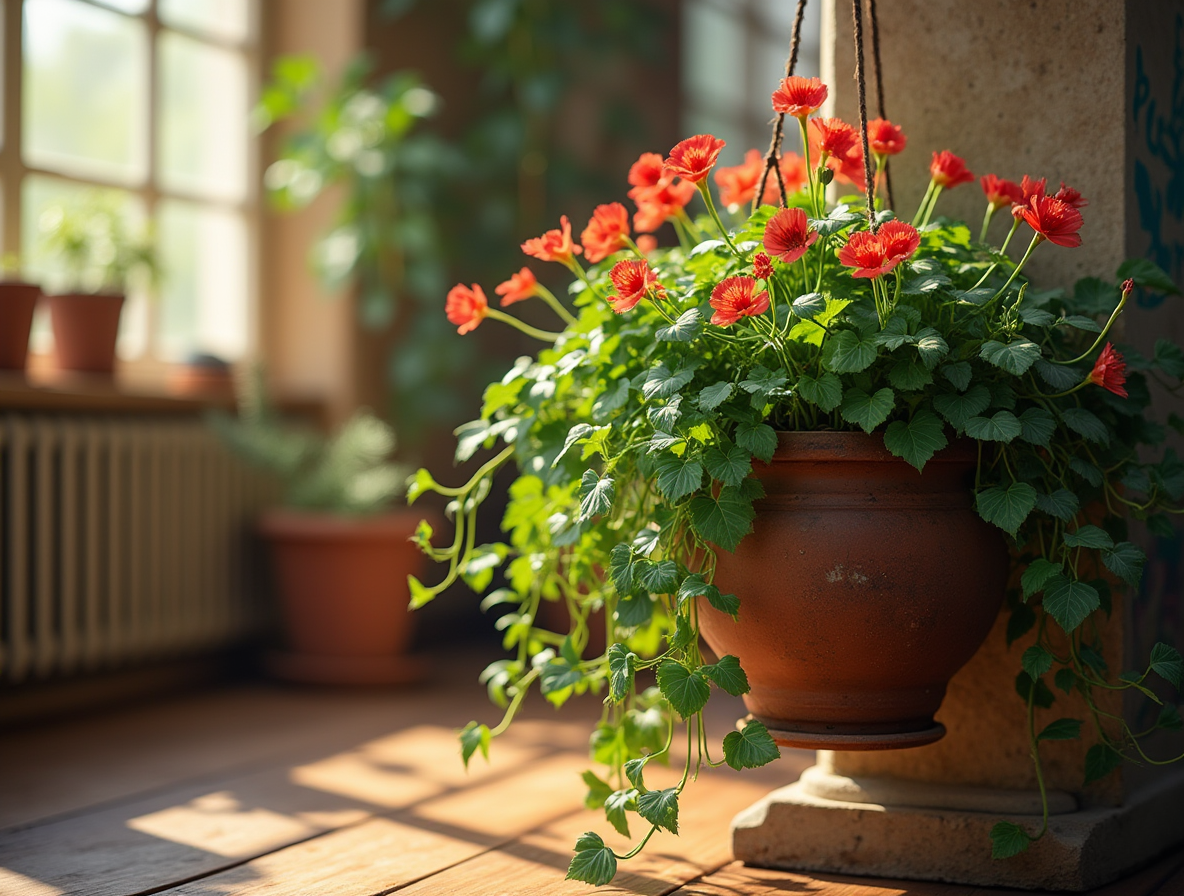Master Easy Lipstick Plant Care with These Simple Steps
A lipstick plant makes an eye-catching and exotic addition to any indoor garden, featuring cascading trails of lush green foliage with striking red tubular flowers resembling lipstick (hence its name), adding exotic charm while being easy to care for! Plus! Care for this houseplant couldn’t be simpler!
No matter your level of gardening knowledge or DIY interior design experience, this guide provides everything you need to know about caring for a lipstick plant – from watering and pruning, through troubleshooting common issues and expert tips, all the way up to finding inspiration when adding them into your own space.
By the time this blog concludes, you’ll have everything necessary to grow flourishing lipstick plants with ease and take full advantage of their graceful beauty.
What Is a Lipstick Plant?
Before discussing how, let’s first address what makes up a lipstick plant – Aeschynanthus radicans to be precise – scientifically known. Epiphytes typically grow on trees instead of deep into soil for water collection purposes and nutrients collection purposes, meaning the lipstick plant relies heavily on air, rainwater or debris collected via epiphytic roots rather than planting its roots deep underground to remain alive and thrive.
When grown indoors, are beloved houseplants due to their ability to brighten small rooms and spaces. Ideal for hanging pots where their trailing stems showcase vibrant red flowers against glossy green leaves in perfect harmony, lippies are low maintenance houseplants adding further to their charm and popularity.

Why Choose a Lipstick Plant?
Are You Uncertain Whether This Plant Is Right For You? Here Are A Few Benefits That Should Convince You of its Value in Your Houseplant Collection:
- Aesthetic Appeal: With its vibrant blooms and trailing vines, this piece makes an eye-catching decoration in hanging baskets or as shelf accent.
- Air Purification: As with many indoor plants, spider plants help improve air quality by filtering out pollutants that pollute it.
- Low Maintenance: Houseplants require low levels of care in order to flourish indoors. With proper attention and watering regimen, houseplants thrive indoors.
- Year-Round Blooms: When kept under ideal indoor conditions, lipstick plants have the capability to flower year round!
- Interior Design Value: Their cascading beauty adds a lush, tropical vibe to any space.
Lipstick Plant Care Guide
Taking care of this plant does not require a green thumb—you just need to follow a few easy steps.
1. Find the Right Spot
Lipstick plants need bright indirect lighting in order to thrive; too much direct sun may scorch their leaves while too little light could prevent flowering altogether. Ideally place your plant near a window offering indirect light or in a room filled with natural daylight for maximum results.
Pro Tip: If your plant is not blooming as expected, more light could be in order. Try moving it nearer an existing light source while still protecting its bloom from direct sunlight!
2. Watering Made Simple
Consistency is of utmost importance when watering lipstick plants; their soil should remain evenly moist without being waterlogged, with enough time given for the top inch of soil to dry before replenishing with additional irrigation.
Signs You’re Overwatering: Yellowing leaves and root rot.
Signs You’re Underwatering: Dry, crispy leaves and drooping foliage.
Pro Tip: For optimal growth in cooler environments, water should be room-temperature. This mimics their tropical home and replicates what they would encounter there.
3. The Perfect Soil
Like other epiphytes, this plants require well-draining soil that allows moisture to drain away quickly. A combination of orchid and succulent potting mixes combined with regular potting soil has proven successful; adding perlite or coarse sand may further aid drainage.
4. Humidity and Temperature
Lipstick plants benefit greatly from an environment rich in humidity due to their tropical origins, so aim for at least 50% relative humidity during dry winters – either using a humidifier, pebble tray, or misting regularly to achieve this target level.
Temperature Tip: To maintain optimal results from your lipstick plant, ensure its temperature range remains between 65-75degF. Avoid cold drafts or sudden temperature drop-offs that could place undue stress on its delicate roots.
5. Feed for Growth and Blooms
Feed your plant regularly during its spring and summer growing seasons (spring to August), cutting back when feeding during fall and winter months. For maximum blooming success, feed with an organic liquid houseplant fertilizer once every four to eight weeks during this growing time (Spring through Summer). Reduce feed frequency during fall/winter seasons by 50%.
6. Pruning and Maintenance
Pluck back your plant every few weeks in order to encourage bushier growth and eliminate dead or yellowing leaves. Be sure to use clean, sharp scissors when pruning; cutting just above each leaf node promotes new growth and prevents future pruned plants.
Bonus Tip: Pruning can also help maintain the attractive trailing shape of a lipstick plant.
Common Lipstick Plant Problems and Solutions
Even with the best care, lipstick plants can sometimes encounter a few issues. Here’s how to address them!
What to Do if Your Lipstick Plant Isn’t Flowering
- Check its light exposure; insufficient light usually prevents blooming.
- Make sure your plant is getting enough nutrition with proper fertilization.
- Avoid overwatering as wet soil may prevent flowering.
Pests to Watch Out For
Keep an eye out for mealybugs, aphids and spider mites when gardening outdoors. If any pests appear, treat with either neem oil or an insecticidal soap immediately to treat any affected plants.
Yellowing Leaves
Yellow leaves often point to overwatering. Allow the soil to dry out and check that your pot has proper drainage.
Creative Lipstick Plant Decoration Ideas
Once your plant is thriving, get creative with how you incorporate it into your home decor!
- Hanging Baskets: Perfect for balconies, sunny corners, or above kitchen counters.
- Bookshelf Display: Style your trailing lipstick plant alongside books and other decor to create an elegant contrast.
- Office Greenery: Add life to your workspace with a lipstick plant in a chic pot. Not only does it enhance aesthetics, but it also improves air quality!
Real Success Stories
1. From Wilting to Flourishing
One first-time plant parent shared, “I googled so much about lipstick plant care because mine was wilting. I adjusted my watering schedule and light placement, and it transformed!”
2. Office Makeover
A company added lipstick plants to their office shelves. Employees reported feeling more relaxed, and the air quality noticeably improved within weeks.
3. Propagation Wins
A plant enthusiast successfully propagated their lipstick plant by placing stem cuttings in water until roots developed. “It’s such a fun and inexpensive way to expand your indoor jungle,” they shared.
Make Your Lipstick Plant Shine
Caring for this plant is as rewarding as it is simple. With the right light, water, and love, your Aeschynanthus radicans will thrive and become a stunning addition to your indoor garden.
For more houseplant care tips and advice on growing lipstick plants, connect with fellow plant lovers or seek out expert guidance from gardening pros like Summer Rayne Oakes and The Plant Doctor.
Now it’s your turn. Have any tips or success stories of your own? We’d love to hear them! Share your experiences in the comments below or tag us on social media to show off your flourishing lipstick plants!




